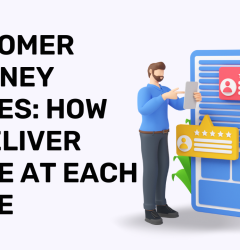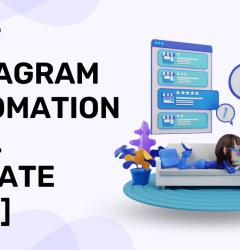15 Jul

The top difficulty, according to about 61 percent of marketers, is bringing in visitors and leads.
It only gets more difficult to contact new clients and manage effective lead generation campaigns as more marketing platforms emerge.
Getting new leads might sound difficult, but a good lead generation plan can help you draw in the right clients and expand your business.
Identifying the ideas and approaches that will work best for you is the challenging part.
In this lead generation primer for beginners, we’ll go through the fundamentals, numerous lead generation tactics you may use, like Messenger marketing, and advice on how to get the most of your lead generation efforts.
What is a Lead?
An individual who expresses interest in a business’s goods or services in one of numerous ways is referred to as a lead.
Once a person expresses interest in a business in some way, that business is likely to contact them because of their expressed interest.

Compared to, for instance, cold phoning, it is considerably more personalised. If you follow the lead generation process correctly, these individuals begin as leads and eventually convert into clients.
Regardless of where they are in your sales funnel, knowing the various lead kinds will help you interact with consumers more effectively. Here are some instances of typical lead stages:
Marketing Qualified Lead (MQL)
An individual who is sufficiently interested in your offering to have taken some action and exhibits typical purchasing criteria is referred to as a marketing qualified lead.
For instance, a person who registers for a newsletter is not yet a qualified lead. That person is qualified if they sign up for a demo.
MQLs can have joined an email list in return for a lead magnet like an ebook or webinar.
Sales Qualified Lead (SQL)
An individual who expresses interest in purchasing anything is referred to as a sales-qualified lead.
SQLs may have used your website’s contact form or Live Chat to ask you an inquiry about your goods or services.
Conversation Qualified Lead (CQL)
An individual who expresses purchase intent in a one-on-one chat with a bot or staff member from your business is referred to as a conversation qualified lead.
Product Qualified Lead (PQL)
People that utilise your items and express interest in purchasing them are known as product qualified leads.
These leads are more geared toward SaaS companies like ManyChat. A PQL might, for instance, be a user of your product or service who later inquires about paid features.
What is lead generation?
Lead generation is the process of drawing prospects to your business and developing their interest through nurturing, with the ultimate goal of turning them into customers.
Job applications, blog articles, coupons, live events, and online material are some ways to generate leads.
These are just a few examples of lead generating tactics you can employ to attract potential clients and direct them to your offers. (We’ll go over further tactics later.)

When someone outside of the marketing field asks what I do, I can’t just respond, “I develop content for lead generation.” It’d be completely lost on them, and I’d receive some really perplexed stares.
That usually works better, and that’s exactly what lead generation is: a technique of introducing potential customers to your company and getting them on the path to eventually making a purchase.
The Importance of Lead Generation
If someone wants to buy something, they just go through the purchasing process. Simple.
If someone has little interest in that goods, attempting to persuade them to buy it may make them feel harassed and pressured into spending money.
This can make consumers feel compelled to do something they don’t want to do, which can be detrimental to your brand’s reputation.

Lead generation can help you match your brand with the correct clients.
Lead generation allows businesses to develop larger communities of like-minded clients, which improves customer loyalty.
It also has the potential to collect marketing information from prospects such as requirements, wants, and preferences, which can assist your company design products or services.
Lead generation can also help to increase brand recognition and reputation by offering information about your products and features to those who come across your brand.
But, because you’re targeting more specialised consumers for your company, Lead Generation is also incredibly cost effective.
The procedure for generating leads
Now that you have a better knowledge of how lead generation and Chat Marketing function, let’s walk through a five-step lead creation process. To begin, you should learn how to create a Messenger bot.
Step 1: A visitor discovers your company via your website, social media profile, blog post, Facebook Live, or giveaway campaign.
They click a call-to-action (CTA) that encourages website visitors to sign up for your Messenger, SMS, or email list – usually in exchange for an incentive.

Step 2: Your bot asks a series of questions to assess whether the visitor is a qualified lead.
Step 3: Qualified leads enter your nurture campaign to become paying clients. This is where you may provide deals and significant content upgrades to keep people coming back.
Step 4: Using lead scoring, you may track high-quality leads based on their interactions with your firm.
Step 5: Once they reach a certain lead score, you can make targeted offers or recommendations, or pass them along to a sales team to seal the purchase.
In summary, when a visitor signs up for your Messenger bot, you receive their email address and/or phone number. They take the initiative. Then you nurture them until they are sales-ready or close to purchasing.
The Fundamentals of Lead Generation Marketing
Lead gen marketing is more than just a wonderful process: it’s about driving visitors to various channels to collect leads.
Determine which channels your ideal customers use, then create accounts on those platforms to begin communicating with them.
When it comes to locating your target audiences, you have several options:
1.Live streams
Live streaming services, such as Facebook Live, are excellent places to generate leads.
Typically, you organise a live event where you assist people with a problem they are experiencing. For example, you may educate them on a product, provide a tutorial, or even open the floor to inquiries.

The trick here is to provide something for free, such as a voucher, a free trial, or a content upgrade, to promote sign-ups and begin producing leads.
2.SMS
Text Message allows you to contact individuals on their phones, and because leads must give you permission to text them, they are more likely to engage with the messages you send.

Text messages are short and snappy, so make sure your CTAs are interesting and direct consumers to another channel, such as Messenger or your website.
3.Email
The nicest benefit about email marketing is that you can offer clients lengthier, recurring content like newsletters or vital updates.
It’s also an excellent location to include unique, high-quality photos. When done correctly, email complements your omnichannel marketing approach, is wonderful for retargeting prior consumers, and can enhance your lead generation efforts.

The nicest benefit about email marketing is that you can offer clients lengthier, recurring content like newsletters or vital updates.
It’s also an excellent location to include unique, high-quality photos. When done correctly, email complements your omnichannel marketing approach, is wonderful for retargeting prior consumers, and can enhance your lead generation efforts.
4.Paid traffic
Paid ads might help you quickly reach out to potential customers.
You may run advertisements for your business on platforms like Google Ads, Facebook Ads, Instagram, and even Pinterest if that’s where your target audience consumes content.
To increase conversion rates, send them to your bot using a Messenger Ref URL to create conversion possibilities.
You can also run click-to-Messenger advertising through a Chat Marketing platform like ManyChat to encourage consumers to take action.
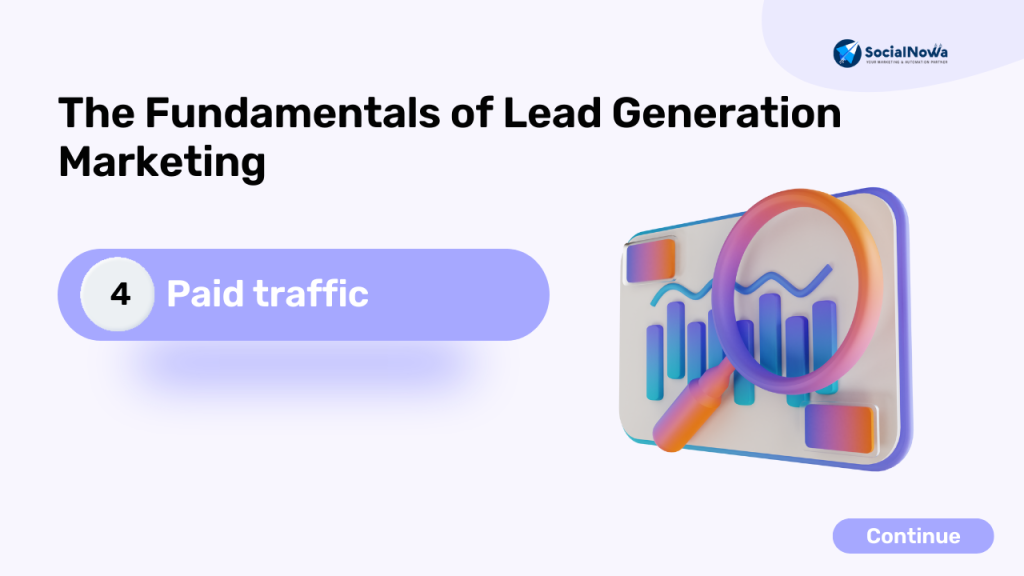
If you’re wondering what your company’s conversion rate is, it’s the percentage of visitors who complete the intended activity on your website.
For lead generation organisations, this would entail getting a user to input their contact information so that your sales team may contact them.
5.Social media platforms
Social media channels can be an efficient lead generation tool for your company, and they are inexpensive.
By publishing films or photographs and starting dialogues, you can immediately establish stronger bonds with your target audience.
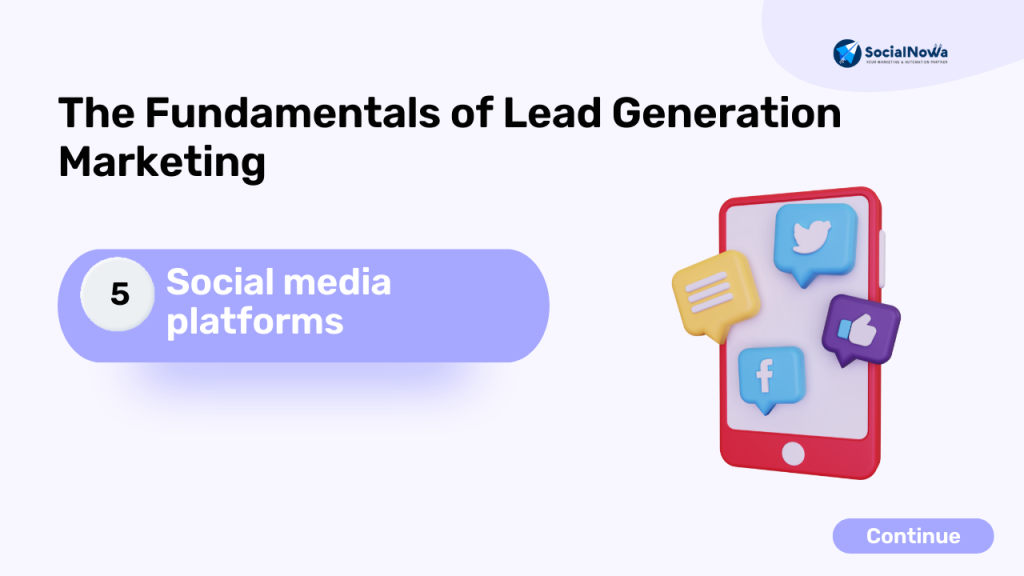
You can also use Instagram’s swipe-up function to direct users to your bot, and Facebook Messenger to hold one-on-one discussions with people — the possibilities are limitless.
Learn more about the various sorts of social media you may utilise to generate leads.
6.Content marketing
Content marketing is an excellent strategy to increase your inbound marketing efforts and convert website leads.
You can provide useful, relevant, and free material on your company’s website for visitors to peruse at their leisure.
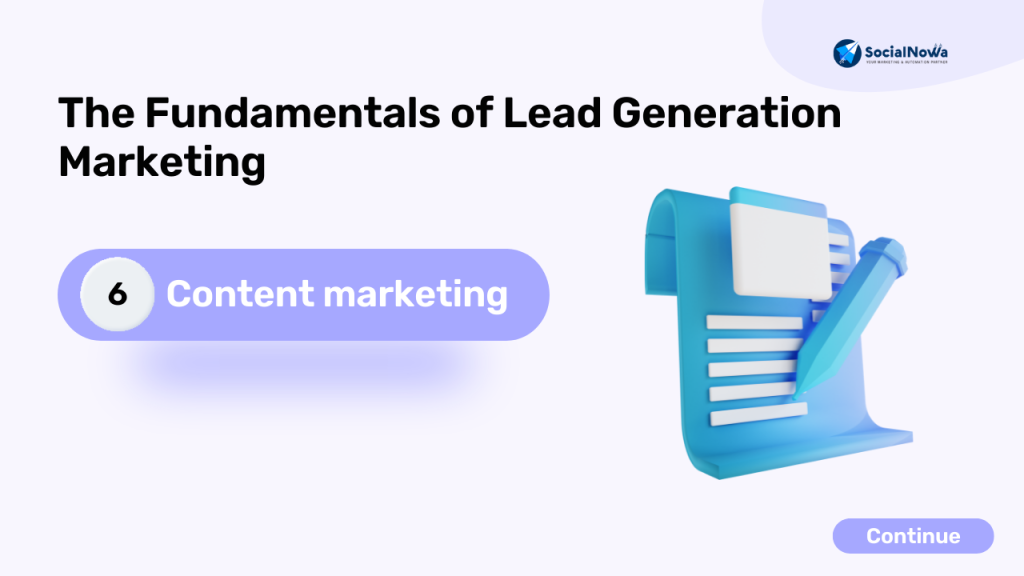
Call-to-actions can appear anywhere on the blog, from a floating bar to a page takeover or a slide-in.
People who enjoy your content are more likely to click your CTAs and interact with your Messenger bot.
7.Word of mouth
Word-of-mouth referrals are a lead-generation strategy that can simply help you spread the word about your company.

You can provide recent consumers or clients an incentive, such as a refer-a-friend discount or free products through social media giveaway campaigns, to advocate for you.
How to Qualify a Lead
As we discussed in the first part, a lead is someone who has expressed interest in your company’s product or service. Let us now discuss how someone can demonstrate their interest.
A sales lead is created by gathering informationThat information could be gathered as a consequence of a job seeker expressing interest in a position by completing an application, a shopper exchanging contact information in exchange for a coupon, or a person filling out a form to download educational content.
Detecting a Lead’s Level of Interest
Here are just a few of the various ways you could qualify someone as a lead.
Each of these cases demonstrates that the amount of information gathered to qualify a lead, as well as their level of interest, can vary.
Let us evaluate each scenario:

Job Application: A person who fills out an application form is willing to give a lot of personal information in order to be considered for a position.
Filling out that application demonstrates their genuine interest in the job, certifying the person as a lead for the company’s recruiting team — not marketing or sales.
Coupon: Unlike a job application, you probably know very little about someone who has found one of your online coupons.
However, if they think the voucher is useful enough, they may be prepared to share their name and email address in exchange for it.
Although there is not a lot of information, it is enough for a firm to know that someone is interested in their company.
Full Name: The most basic information required to tailor your communication with each lead.
Email: This serves as a unique identification and is how you will contact your lead.
Firm: This will allow you to explore your lead’s industry and company, as well as how the lead can benefit from your product or service (mainly for B2B).
Understanding an individual’s function will assist you understand how to communicate with them.
Every brand stakeholder will have a unique take and perspective on your offering (mainly for B2B).
Country: Geographic information can assist you split your contacts by location and time zone, as well as qualify leads based on your service.
State: The more comprehensive information you can acquire without losing conversions, the better. Knowing the state of your leads can help you qualify them further.
Lead generating strategies
Lead generation strategies are not one-size-fits-all. What works for one ecommerce store may not work for another agency or local company owner.
The goal is the same – go where your potential consumers are — but there are numerous routes you might take to get there.
Here are some lead creation tactics you may attempt right now.
1.Facebook lead generation
With over 2.5 billion monthly active users, Facebook is an excellent medium for lead creation.
With Facebook Lead Ads and Click-to-Messenger Ads, you can reach and connect with target audiences in a variety of ways, including growing subscriber lists, registrations, pre-orders, email subscriptions, and more.

You can also initiate interactions with Business Page visitors by using a CTA that automatically redirects them to a Messenger chat.
2.Instagram lead generation
With over 500 million monthly active users worldwide, about 80% of Instagram accounts follow a company.
Basically, if you’re not using Instagram to create leads, you might be missing out. Instagram allows you to tell stories, share high-quality photographs, sell products, and even send traffic back to your website or Messenger bot in your bio.

You may also send interested users to a landing page directly from your story (once your account has 10,000 followers) using Instagram’s “swipe-up” feature.
3.Organic search engine lead generation (SEO)
Search engine optimization (SEO) is a successful inbound lead creation approach for locating potential clients.

People can find your page in Google when looking for a certain question, visit your website, and take action – whether it’s to buy things or download a useful resource.
4.PPC lead generation
Pay-per-click (PPC) advertisements can help you achieve your lead generation and inbound marketing goals.
This includes paid ads on platforms such as Google Ads, Facebook, Instagram, and LinkedIn.

To generate clicks from this form of lead generation campaign, it relies on clever audience targeting, a budget, and adhering to advertising best practices.
5.B2B lead generation
Business-to-business (B2B) lead generation generally necessitates a different technique than business-to-customer (B2C) lead generation.

Marketers generally collect more information from a potential consumer, such as name, email, company name, job title, and organisation size – anything that could aid in the sale.
Leads are typically cultivated with marketing automation before becoming qualified for sales.
The purpose of B2B lead generation is to generate a steady supply of high-quality leads for your company.
6.Lead generation advice
Learning how to design a sales funnel and fill it with qualified leads is not a simple undertaking.

Customers may stay for months before buying anything or taking any action, depending on how long it takes for them to convert. Here are four ways to assist you speed up lead capture in your next campaign:
7.Investigate your target audience.
Knowing your target demographic is essential for developing an effective lead generation programme.

Find out where your target audience hangs out, what types of content they read, and what modes of contact they like. This knowledge will assist you in developing successful lead generating concepts and driving greater results for your campaigns.
8.Try out new channels.
Begin by focusing on one or two channels that you believe will be effective based on your study, such as Facebook, SMS, email, Instagram, or SEO.

Also, don’t be scared to experiment with new channels like Messenger or live streaming. Regardless, test which channels generate high-quality leads and priorities them.
9.Use lead generation software.
Most channels will have a variety of lead creation tools that you may utilise to attract, nurture, and qualify leads.
An excellent platform will make it simple to communicate with your audience over many channels, such as text message , Messenger, and email. You can, for example, set up a chatbot to funnel potential prospects from your website and Messenger.

There are several fantastic chatbot examples from a number of businesses that demonstrate the power of raising conversion rates through messenger marketing.
Then, to cultivate a relationship, create automated programmer that reach out to clients by Short Message Service and other means.
Create lead magnets at each stage of the client journey.
Lead magnets are used by marketers to collect information from potential customers or clients, boost lead acquisition, and move people into the sales pipeline.

But you can’t just give out any old piece of content for free. Aim to generate a piece of valuable, high-quality content, such as a white paper or ebook, that assists your target audience with their most pressing difficulties.
It is vital to collect information like phone numbers, email addresses, and personal preferences via a lead-capture form in order to generate relevant and personalised digital marketing campaigns.
Conclusion :
With our lead generating beginner’s guide, you are now equipped with the necessary knowledge to produce leads for your company.
Choose a range of techniques for your organisation to ensure you cover all bases and start producing leads.
